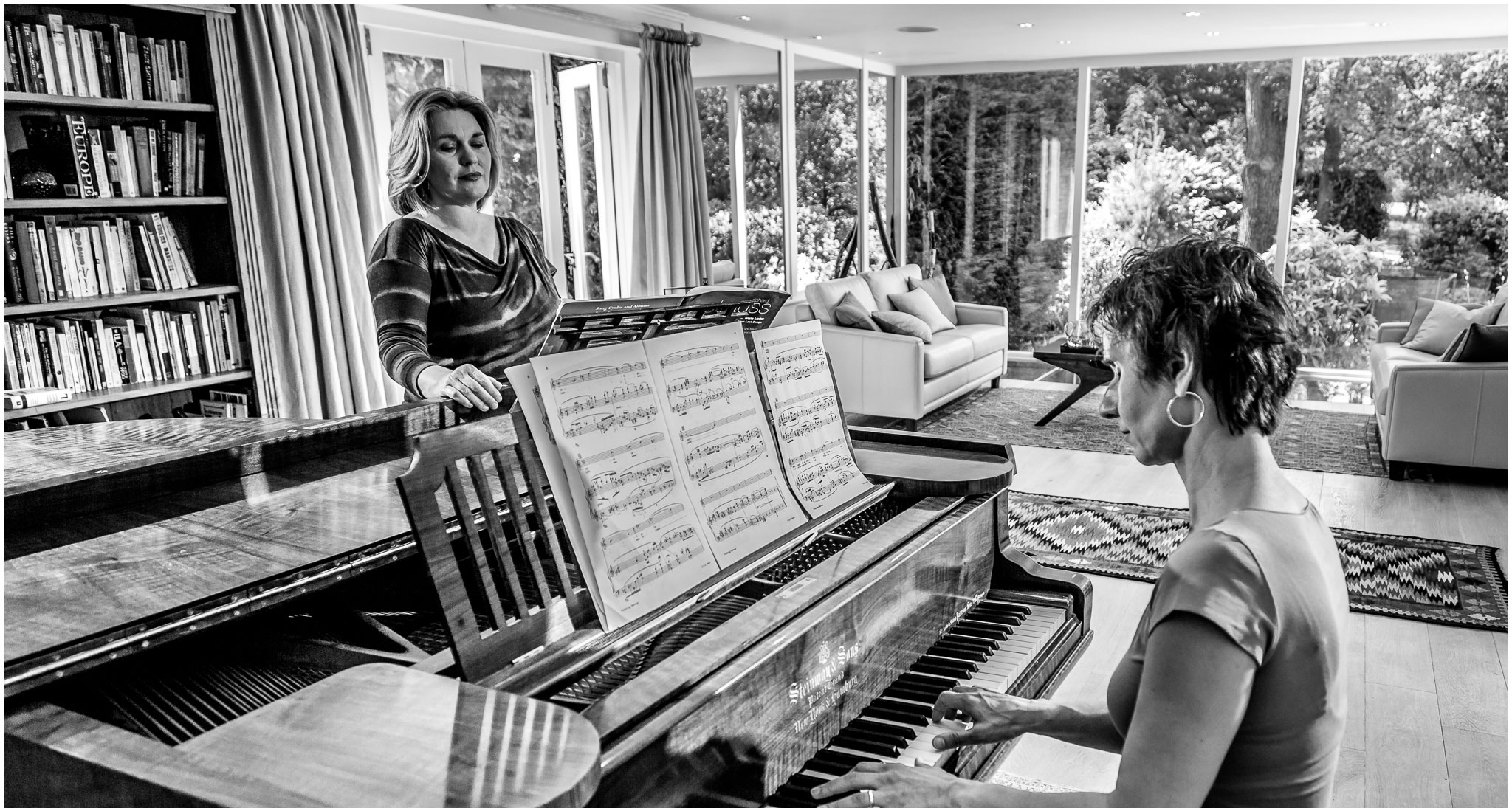
Lunchtime Concert with Alexandra Weaver & Elizabeth Mucha
Date: Friday 11th July 2014
Time: 1pm
Venue: St John the Baptist Church
Location: Spencer Hill, Wimbledon
Artists:

| Franz Schubert | Frühlingsglaube D686 Nacht und Traüme D827 Der Wachtelschlag D742
|
| Richard Strauss | Frühling September (from Four Last Songs)
|
| Franz Liszt | Rigoletto: Concert Paraphrase (Piano Solo)
|
| Michael Head | Sweet Chance, that led my steps abroad Green Rain
|
| Martin Eastwood | Erotic Fragments (Six short songs from “The Song of Songs”)
|
| Enrique Granados | La Maja de Goya Amor y Odio El tra la la y el punteado La Maja y el Ruiseñor
|
German Lieder by the father of Art Song, Franz Schubert, open the programme. Both “Frühlingsglaube “(Faith in Spring) and “Nacht und Traüme” (Night and Dreams) express a desire for a different state of being: spring will bring a change for the better in the first song and in the second song the poet yearns to return to the soothing world of dreams. Der Wachtelschlag (The cry of the quail) evokes a simpler world where man, nature and God are united through the song of the quail.
Next are two songs from the “Four Last Songs” by Richard Strauss. “Frühling” (Spring) celebrates the arrival of spring. “September”, on the other hand, is not so much a celebration of autumn but an astonishingly calm and glorious acceptance of summer’s demise. The “Four Last songs” were composed as late as 1948, the year before the composer’s death at the grand age of 85.
Hungary and Italy join forces in Franz Liszt’s virtuoso piano transcription of the famous vocal quartet from Act 3 of Verdi’s opera Rigoletto.
The British isles feature in the programme with two songs by Michael Head, which pay tribute to the beauty of the English countryside.
The short song cycle, “Erotic Fragments” by contemporary composer Martin Eastwood, is a setting of texts from the Biblical “Song of Songs”: these texts deal with sexual union between husband and wife, but in the Christian tradition they have come to be read as an allegory of the union between Christ and the church.
The programme ends with music by Spanish composer Enrique Granados. The first three songs are “Tonadillas”: short songs whose themes revolve around the flirtations and love affairs of ‘majas’ and ‘majos’. Originally this was a popular term for people from the lower strata of C18th Spanish society, who distinguished themselves by their exaggerated Spanish outfits and mannered style in response to the frenchification of the upper classes. Far from being insulted, the elite adopted the costumes and manners of theses majas and majos; these aristocratic ‘majas’ and ‘majos’ became immortalized by the Spanish painter Francisco Goya in the latter half of the C18th.
Granados was infatuated with Goya’s paintings and tried to recreate this colourful world in his songs and even wrote an opera entitled “Goyescas”. Sadly it was a flop but the exquisite aria, “La maja y el ruisenor” (The Maja and the nightingale) endures to this day on concert stages worldwide.
